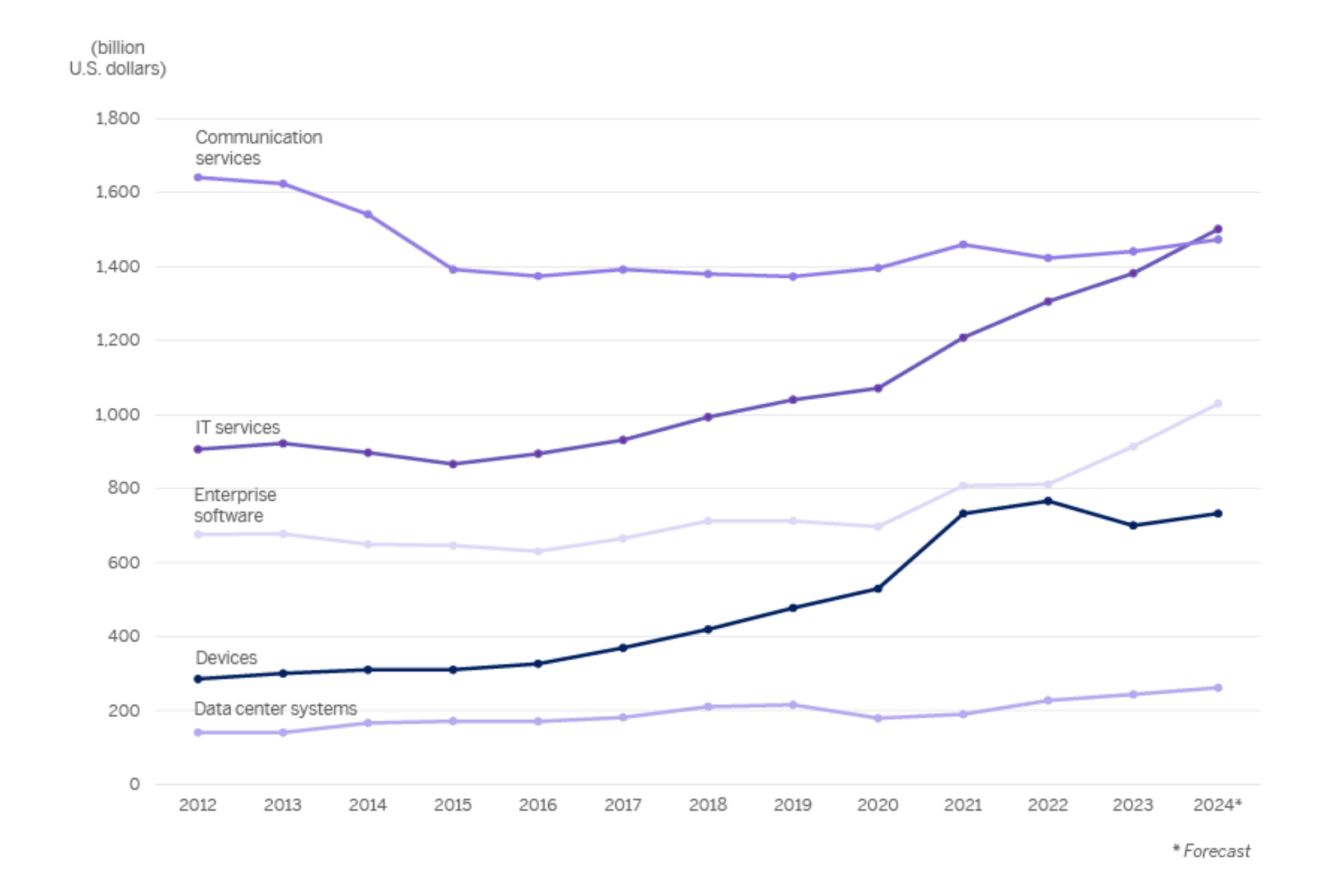Other virtual reality goggles and artificial intelligence without limits. It may seem that 2024 will focus on these two technology trends, but it is almost certain that neither techno-optimists nor techno-skeptics will get it completely right. Let’s stick with improving chips or energy prices, deploying shared photovoltaics or faster telecommunications.
Apple's virtual reality glasses (Vision Pro) were promising at the end of 2023 to become a trend in 2024. They did become a trend, but thanks to a huge rate of returns. It happened to Sega in 1991 with Sega VR; to Sony in 1997 with Glasstron; to Google in 2012 with Google Glass; to Facebook in 2014 with Oculus; to Play Station, Valve, to HTC... To answer the question regarding the technological trends of 2024, we must first answer another one: “Where are my glasses so that I can be in two worlds at the same time?”. We might then better understand techno-optimism.
Technology trends are long-term
The modern concept of trend has us looking to the future, without taking into account the background of the technology, and instead always focusing on what is to come or what has not yet been achieved. What about what we have already achieved? What about the milestones that are already part of the trend curve? Huge breakthroughs are often taken for granted as soon as they occur. For instance, electric power is approaching “six nines” availability, i.e., running without outages 99.9999% of the time; 5G is lightning fast, allowing us to download anything in seconds; cloud computing is now mainstream.
Forecast of global expenditure on information technologies 2012-2024, by segments
In fact, the LEDs on the screen you are probably using to read this have an efficiency of over 50 %, whereas a candle barely converted 0.01 % of its chemical energy into light.
Energy production has also changed considerably. The Vanguard I satellite, launched in 1958, deployed a panel with just 0.1 Wp in orbit. Today, a typical home with photovoltaic panels generates about 2 to 4 kWp, a leap of five orders of magnitude. Moreover, technology has driven prices to fall sharply: in 1975, producing a 1 W panel cost $100, while in 2022 it was just $0.26.
And great strides have been made with many other technologies in recent decades: from $9.2 billion a terabyte in 1956 (yes, you read that right) to $14.30 today; the cost of DNA sequencing has gone from $10 million in 2001 to less than $0.01 in 2022; and download speeds on mobile networks went from 40 kbps with 2G in the 1990s to more than 20 Gbps with 5G, a recent phenomenon.
We tend to incorporate technological trends into our lives so quickly that we often underestimate just how much has been accomplished already. Although some still haven’t managed to catch on, as is the case with VR, AR, MR, and XR glasses, different acronyms for different realities that never seem to materialize.
So where are my virtual reality glasses?
In many cases, companies are making promises that are difficult to keep, such as a system capable of transmitting information so close to the eye without overstimulating the optic nerve, and so we end up having to take off our headset or glasses. The reason Apple missed the mark with its Vision Pro in 2024 ($3,500 to get dizzy) is not new. The masses of people returning the product have the exact same complaint as with previous gadgets: the experience is bad because they make you dizzy. Users have also claimed to experience a sense of social isolation as well as the device leaving a mark after just a few minutes of use. VR glasses are here, but nobody wants to use them.
We won’t have a self-driving car, but we have digital parrots!
While 5G is here, the self-driving car hasn’t got going yet. But rather we have text, image, music and video generator tools that no one seemed to have asked for and yet are now everywhere. Stochastic parrots, machines that produce without understanding what they are doing.
In 2020, GPT-type systems were hardly known. In 2024 they are widespread and in every browser. In fact, it is already possible to use it to make videos and it is clear that this will be a much debated topic in the coming years.
Investing is more than money
Take part in the most innovative investment trends that matter to you most with your digital account in Switzerland, from 10 thousand dollars, francs or euros.
Technology trends in 2024, as we expect them to be
While there may be major breakthroughs in certain fields in 2024, the bulk of society would find out only when that market suddenly grows, and rarely in advance. The real predictable trend is that only those doing research at the cutting edge seem to know what will actually succeed.
In other words, we will not be able to anticipate black swans, or any unpredictable occurrences. We can identify advancements that will certainly occur throughout 2024, although in an information-saturated society, they might not seem very significant:
- Telecommunications networks will be a bit faster.
- Driving safety for vehicle occupants will improve.
- Homes will be slightly more efficient.
- Chips will be faster than before.
- The price of renewable energy will drop slightly.
- More shared photovoltaics will be deployed.
- Artificial intelligence will do new things we won’t understand.


